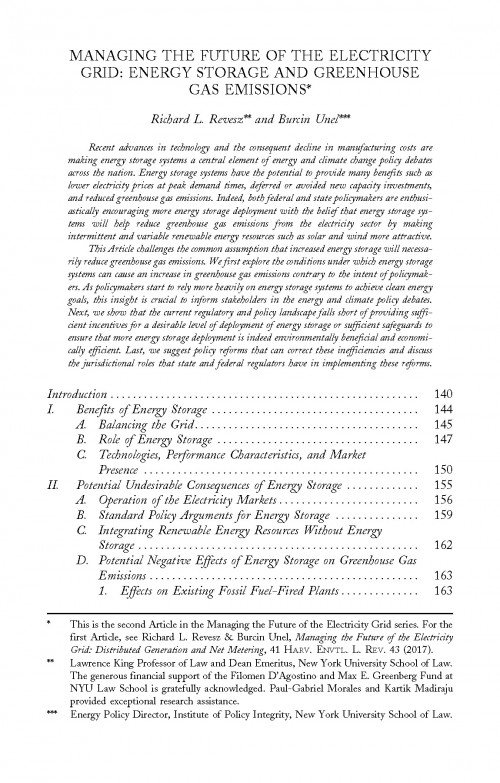Recent advances in technology and the consequent decline in manufacturing costs are making energy storage systems a central element of energy and climate change policy debates across the nation. Energy storage systems have the potential to provide many benefits such as lower electricity prices at peak demand times, deferred or avoided new capacity investments, and reduced greenhouse gas emissions. Indeed, both federal and state policymakers are enthusiastically encouraging more energy storage deployment with the belief that energy storage systems will help reduce greenhouse gas emissions from the electricity sector by making intermittent and variable renewable energy resources such as solar and wind more attractive.
This article, published in the Harvard Environmental Law Review, challenges this common assumption that increased energy storage will necessarily reduce greenhouse gas emissions. We first explore the conditions under which energy storage systems can cause an increase in greenhouse gas emissions contrary to the intent of the policymakers. As policymakers start to rely more heavily on energy storage systems to achieve clean energy goals, this insight is crucial to inform the stakeholders in the energy and climate policy debates. Furthermore, we show that the current regulatory and policy landscape falls short of providing sufficient incentives for a desirable level of deployment of energy storage or sufficient safeguards to ensure that more energy storage deployment is indeed beneficial. We suggest policy reforms that can correct these inefficiencies and discuss the jurisdictional roles between state and federal regulators in implementing these reforms.
The article was selected by Environmental Law Reporter as one of the five best environmental law articles published during the 2018-2019 academic year. An adapted version, The Future of Energy Storage: Adopting Policies for a Cleaner Grid, was included in the August 2019 Environmental Law and Policy Annual Review issue of Environmental Law Reporter’s News & Analysis.

